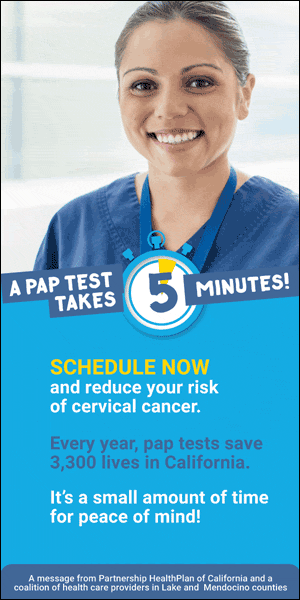

The pandemic leaves countless Americans without jobs, and for that reason, nearly 14 million people lost employer-sponsored medical health insurance. For the one-in-10 Americans with diabetes, this poses a potentially life-threatening problem.
A quarter of people with diabetes take less than their prescribed dose of insulin to save money, based on market research this year by the American Diabetes Association. Rationing insulin can have disastrous health effects, including death.
“If forced to make that decision around, do I pay my mortgage? Or will i skip a dose? That’s a tough decision for individuals, but a real one,” says Tracey Brown, CEO of the American Diabetes Association.
The association’s research also shows the unemployment rates are higher for those who have diabetes, when compared to general public.
“The costs still go higher and better,” Brown says. “Even for those who have insurance, your out-of-pocket cost is still high. And if you don’t have insurance, it’s simply not a great scenario.”
Insulin was created in the 1920's by Canadian researchers. Before that, diabetes was considered a death sentence. Through the Twentieth century, researchers continued to refine insulin to be more efficient.
In the 1980's, synthetic insulin became commercially available. This kind of insulin is considered the defacto standard today, and it has stayed refined into long-acting insulins.

In 1999, a vial of insulin cost $20, but in 2021 it was $332. This could add up fast – some people with diabetes use 5 or 6 vials a month.
One study found the average out-of-pocket costs for a Type 1 diabetic with private insurance was around $2,500. For a small percentage of individuals, the annual costs exceeded $5,000.
Drug companies have largely thwarted creating generic versions of insulins – which could dramatically lessen the price – by renewing drug patents. Drug companies say this really is needed to defray the cost of development, while critics say it's made to maintain high income.
The rising costs have shined increased scrutiny on pharmaceutical companies recently, in the public and lawmakers.
COVID-19's Human Impact
Travis Paulson, that has Your body, says the pandemic wasn't the very first financial crisis that's made him find it difficult to afford insulin. Throughout the 2008 housing crisis, Paulson said finding a job was extremely difficult, and that he often rationed his insulin supply to make ends meet.
Now, Paulson resides in Minnesota as well as for many years, he's attended Canada to purchase his insulin.
“I learned that I possibly could get insulin up there for around $25 a bottle. The same insulin costs $350-$400 a bottle here,” Paulson says. “Simply by crossing the border that’s 90 miles away.”
In March, COVID-19 led Canada to shut its border. Paulson couldn’t cross to buy his insulin or even the insulin he provides with other diabetics.
“I had to turn around and are available home empty-handed so that was unsettling since it not just cut me recorded on insulin, however it reduce anybody I possibly could assist with insulin,” Paulson says.

In the months that followed, he paid full-price for his insulin, that they says was difficult.
The U.S.- Canada border is still closed, but Paulson was able to place a sizable insulin order through a pharmacy in Vancouver.
“Otherwise, yeah, I’d be seriously hurting at this time,” he states. “When I recieve insulin from Canada, I’m literally paying. I’m paying, you know, $600 for $6,000 worth of insulin.”
Stephanie Heckler is a nurse in Columbus, Ohio. At the start of the pandemic, she asked for work accommodations to safeguard her from COVID-19 exposure – a substantial danger for people with diabetes. She says she was denied accommodations, after which denied short-term disability.
Heckler is on her behalf husband's insurance policy, which she acknowledges provides her with good coverage. But her husband's income was not enough to aid them, so she returned to work.
“I hated that I needed to choose between, like keeping myself as safe as you possibly can like a high-risk person, after which figuring out how you can, you know, purchase my mortgage and my education loan payments,” Heckler says.

Pharma’s Response
There are three pharmaceutical firms that give you the U.S. with insulin: Eli Lilly, Sanofi and Novo Nordisk.
Indianapolis-based Eil LIlly rolled out an insulin affordability enter in April. Since then, the organization announced it will likely be a lasting addition.
“The overarching story for Lilly in 2021 – or I suppose people prescribed Lilly insulin – is, if you’re paying more than $35 per month, you’re paying an excessive amount of,” says Eli Lilly's insulin affordability marketing director Wade Neucks.
For individuals with commercial insurance or who're uninsured, there's a $35 monthly co-pay for many Eli Lilly insulins. There are no income or employment requirements, and co-pay cards are for sale to download online.
“As COVID arrived, it introduced a brand new gap in to the marketplace that wasn’t there previously,” Neucks said. “We saw the requirement for one more plug to help out folks that were unexpectedly affected by COVID.”
Still the program has its limits. A person with government healthcare assistance – like Medicaid or Medicare – is ineligible. This program also has a $7,500 cap per person.
In 2021, seniors on Medicare Part D will also be entitled to insulin affordability the help of Eli Lilly.
The two other insulin makers also launched affordability programs although they're more restrictive.
Advocates want more
T1International is a group that advocates for insulin affordability. Senior advocacy manager Allison Bailey, says as the new Eli Lilly program is a part of the right direction, it's not comprehensive.
“It might be so much easier if patients could just go to the counter and buy what they need. Which is … another hoop to leap through,” she says. “It should just be affordable in the first place.”
During summer time, Minnesota passed legislation to cap monthly insulin copays at $35. The bi-partisan legislation was named after Alec Smith, a 26-year-old who died after rationing his insulin supply.
Within hours of the Gov. Tim Waltz filling out the legislation into law, PHRMA – a pharmaceutical trade group – sued their state. The group argues the $35 copay causes financial injury to drug companies, and that the government is violating the constitution by seizing private property.
The law will remain in place as the suit moves with the courts.
This leaves some advocates asking why drug information mill offering their very own assistance programs while standing behind the PHRMA lawsuit.
“There’s that interesting dynamic where they’re stating that this one’s wrong, but this one’s okay,” Bailey says.
Congress decided on another federal aid package now, that could briefly help people can not afford insulin. But drug pricing concerns won’t disappear, even with anticipated economic growth in 2021.
This story was produced by Side Effects Public Media, a news collaborative covering public health.













